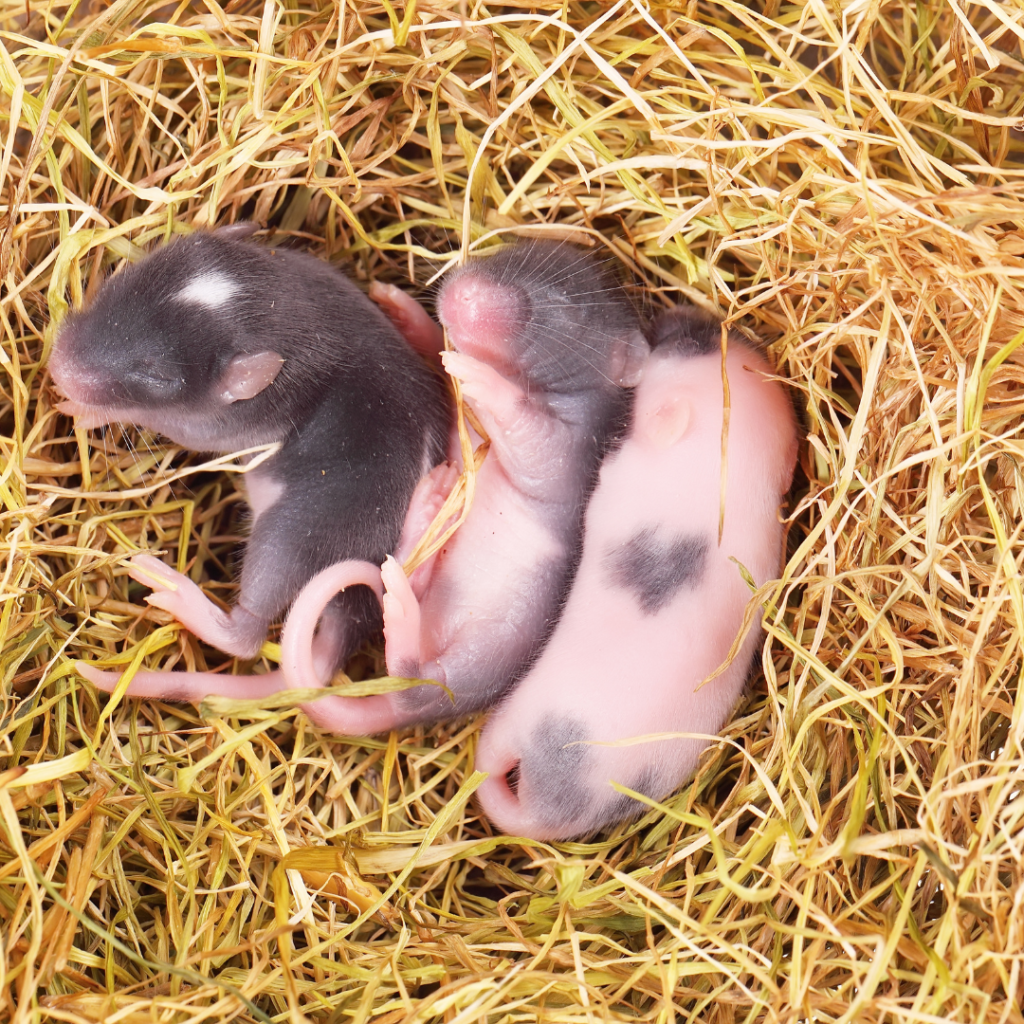Share This Page!
Most Common Mouse Species in Minnesota
If you have any questions or concerns or would like to schedule an appointment call or send us an email
Call Us Today! 952-404-BOGO (2646)
House Mouse

Appearance
They are known for having pointy snouts, and large rounded ears. In the wild, their fur can vary between grey, light brown, and black. Their tails can measure between 2-4 inches in length.
Length (without tail): 3-4 inches
Weight: 10-25 grams
Lifespan: 1-6 years
Average Vertical Jump: 1-1.5 feet


Habitat/Behavior
The House Mouse is one of the most widespread mammals around the globe. They can be found on every continent besides Antarctica. These mice can be solitary or social animals. Their social groups are made up of one male and multiple females and their babies. Like any mouse, its sole purpose is to forge for food but the house mouse stays around 30 feet from its nest to find food. They are territorial and will defend their 30-foot area from other mice and intruders.

Reproduction
Like every mouse, they mate all year round. They mate more often in the warmer months between late spring and early fall. The age when they become sexually mature is 5-7 weeks old.
Pregnancy duration: 19-21 days
Baby carrying: 5-6 pups
Number of litters (per year): 5-10
North American Deer Mouse

Appearance
The name deer mouse comes from their similar colors to a deer. With the top fur color being a camouflaging brown or gray and the belly and legs are all white. Deer mice that live in a prairie habitat versus wooded have evolved to have shorter tails since they don’t need to use them for climbing. So their tails can vary in length from 1.8 to 4.0 inches long.
Length (without tail): 3-4 inches
Weight: 10-24 grams
Life Span: 1.5-8 years
Average Vertical Jump: 1-1.5 feet


Habitat/Behavior
During the day deer mice that live in wooded areas love to nest off of the ground up high in trees as they are notoriously good climbers. But some deer mice also live in prairie habitats and they choose to make burrows in the ground. These mice live in social groups of over 10 mice. The groups contain one adult male, multiple females, and their young. In winter to stay warm outside they huddle all together inside their insulated nests.

Reproduction
Male deer mice will mate with multiple females over the course of a year. A mouse once born takes around 49 days for a male to become sexually mature and just 35 days for a female.
Pregnancy duration: 22-30 days
Baby carrying: 4-6 pups
Number of litters (per year): 3-4
White-Footed Mouse

Appearance
They are commonly mistaken for deer mice. A few differences are that the white-footed mouse has larger hind legs and the colors on their tails blend more than on a deer mouse. Their tails are quite long and can measure 2-4 inches. Both mice can vary in color going from brown and gray.
Length (without tail): 3-4 inches
Weight: 20-30 grams
Lifespan: 1-3 years
Average Vertical Jump: 3-4 feet

Habitat/Behavior
These mice are mostly solitary animals and extremely territorial. Similar to the deer mouse they are also very good climbers. They commonly take over empty bird nests and spend a lot of time in trees when they are not inside a home trying to stay warm in the winter. These mice are also great at tracking and can find their way back home from over 2 miles away. They mostly live in heavily wooded or grassy areas.

Reproduction
Similar to the deer mouse white-footed mice also have males that mate with multiple females throughout the year. They become sexually active 44 days after being born.
Pregnancy duration: 22-28 days
Baby carrying: 2 to 9 pups
Number of litters (per year): 2-4
Meadow Jumping Mouse

Appearance
This mouse is easy to identify. They have large hind feet and a long tail. The tail can grow to be between 4-10 inches long. The color of their fur can vary but you can always see a dark brown strip on its back while the sides are usually orange or bright yellow. The underbelly is similar to that of a deer mouse where it’s all white and the feet are white and pink.
Length (without tail): 3-4 inches
Weight: 12-30 grams
Lifespan: 1-5 years
Average vertical jump: 3 feet


Habitat/Behavior
These mice have a very large range throughout North America. They inhabit ecosystems such as; wetlands, mountains, and grasslands. These mice are solitary but don’t act territorial by fighting off other individuals. Uncommon for most mice this mouse hibernates in the winter starting from late September to mid-April or May.

Reproduction
The males are the first to wake up from hibernation and quickly after feeding are sexually active. Once the females wake up they start breeding right away. Their nests are usually burrows under the ground made up of leaves and grasses. Which they use to hibernate in as well. The mice after being born are sexually active at 28-33 days old.
Pregnancy duration: 18 days
Baby carrying: 2-9 pups
Number of litters (per year): 2-3
Western Harvest Mouse

Appearance
This mouse has a somewhat similar coloration to the deer mouse. They are smaller in size and have a more yellow or yellowish-brown color. Their tails are slightly shorter as well (2-3 inches long). Their colors can also frequently change depending on the weather and the season.
Length (without tail): 2-3 inches
Weight: 8-17 grams
Lifespan: <1 year
Average vertical jump: 1-1.5 feet

Habitat/Behavior
Unlike most mice which are active all year round and do not hibernate this mouse enters a state of “temporary hibernation” or torpor for short. They lower their body temperature and metabolism which allows them to survive without food for longer periods. Like most mice, they are also prolific climbers building nests off the ground as well as underground burrows, under trees, logs and plants. Their habitat spreads across most of western North America meaning they can live in many different environments from grasslands and woodlands to mountains and wetlands.

Reproduction
They breed from early spring to late fall. Most nests are built on the ground inside a shrub or fallen tree so they are protected from predators. Throughout the breeding season, a female mouse can have up to 40-60 young. The pups become sexually active after 3 weeks.
Pregnancy duration: 25 days
Baby carrying: 1-9
Number of litters (per year): 10-14
Northern Grasshopper Mouse

Appearance
These mice are commonly miss identified as white-footed mice due to their similar gray fur color. But by looking at their tail length you can see that the grasshopper mouse has a much shorter tail (1.3 to 2.5 inches). The grasshopper mouse also weighs close to 2 times as much as the white-footed mouse due to their protein-rich diet contributing to their muscle growth.
Length (without tail): 2-4 inches
Weight: 42 grams
Lifespan: <1 year
Average vertical jump: 1-2 feet

Habitat/Behavior
This mouse is unique. Unlike other mice that are herbivores, this mouse is carnivorous. Eating mostly insects like grasshoppers, worms, moths, and butterflies. They have also been found eating other mice! They are also extremely territorial and will attack other rival males. These mice live in burrows in the ground. They live in prairie lands and grasslands with sandy or gravel soil.

Reproduction
Their breeding season goes from March-August. Once they find a mate the male and female bond together and take care of the young together. The male grasshopper mouse will hunt and gather food to feed the female while she feeds their young. This type of courtship is extremely rare for a mouse species. The mice reach their sexual maturity at 3 months.
Pregnancy duration: 31 days
Baby carrying: 2-7
Number of litters (per year): 2-3
Brown/Common Rat

Appearance
Their fur color varies from brown to brownish-grey. Their bellies can be pale gray color or yellowish color. Their naked tail is also pale brown and can measure 5 to 8 inches in length.
Length (without tail): 8-10 inches
Weight: 250-350 grams
Lifespan: 2-4 years
Average Vertical Jump: 3 feet

Habitat/Behavior
Like the house mouse, this rodent also lives all around the world. They live on the ground and create burrows underground to make nests. Another nickname for the rat is the water rat because they often live in places near water including sewers. This is where most of the rats found in Minnesota live. There is an old sewer system underneath Minneapolis and Saint Paul that is populated with rats. If you live in the suburbs you are safe and don’t need to worry about rats getting inside your home. They are excellent swimmers and can hold their breath for 3 minutes and tread water for up to 3 days straight. These rats live in groups made up of a hierarchy structure. Each group also occupies certain territories and defends them from other rat colonies.

Reproduction
Female rats that live inside colonies take part in collective nursing. Meaning they help other offspring with feeding. The age for sexual maturity is 3 months old for males and 4 months old for females.
Pregnancy duration: 22-24 days
Baby carrying: 8 pups
Number of litters (per year): 7




